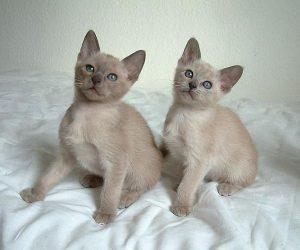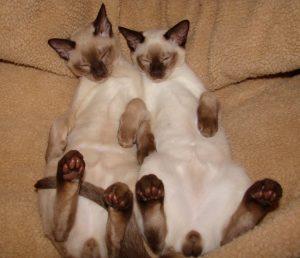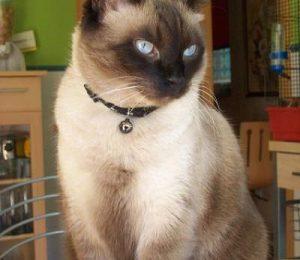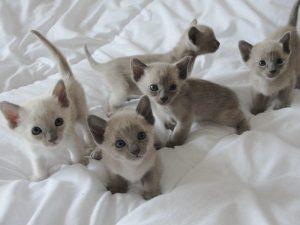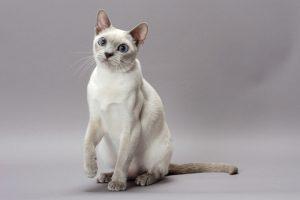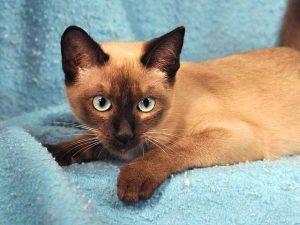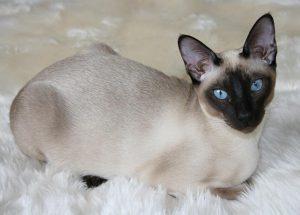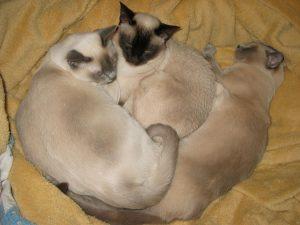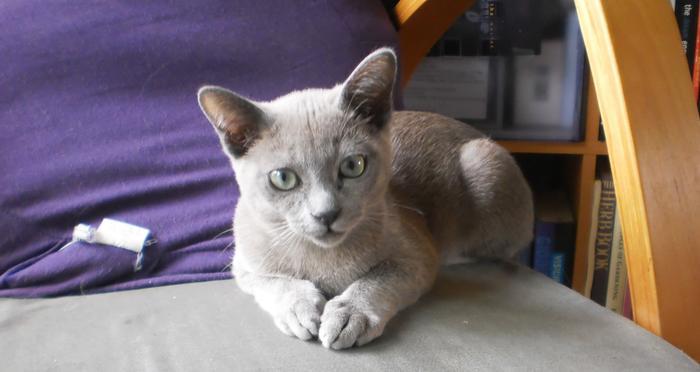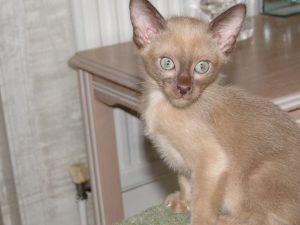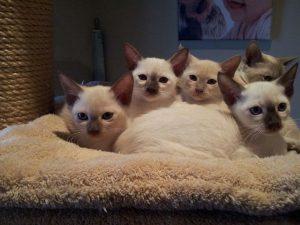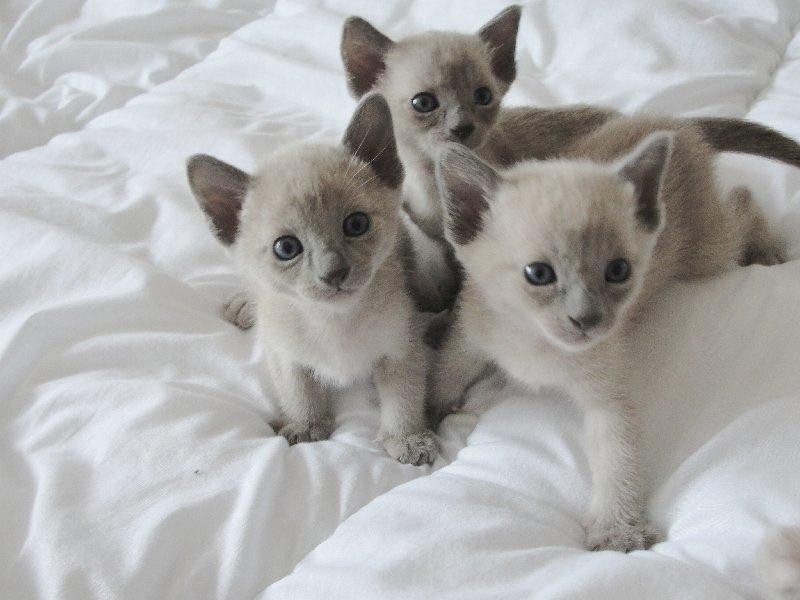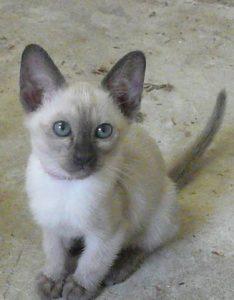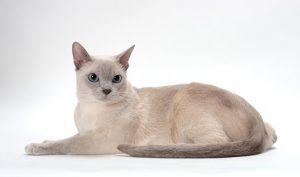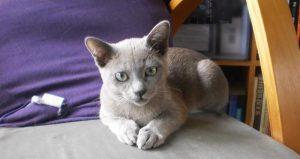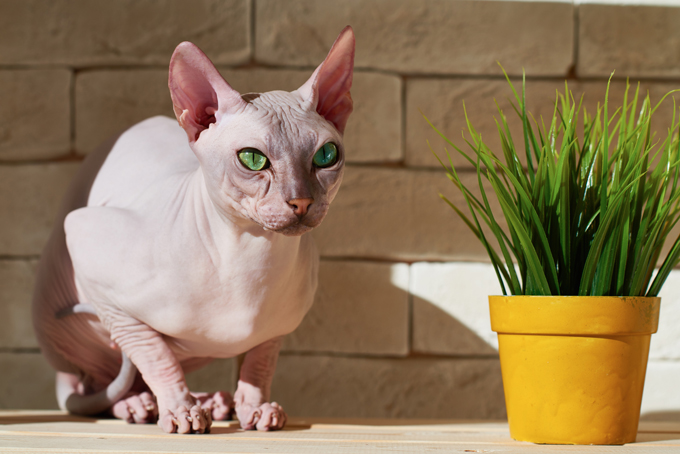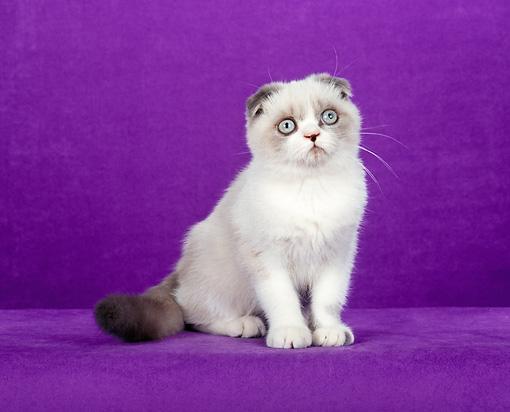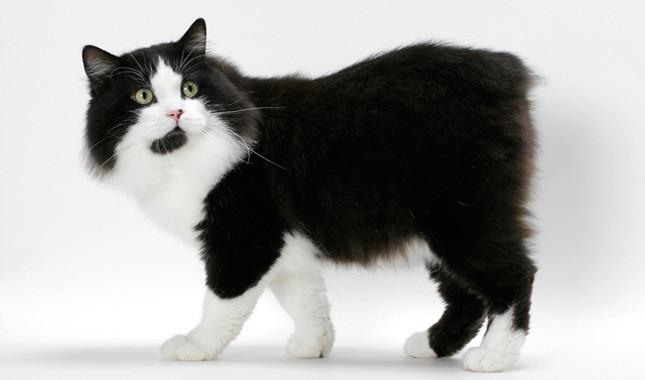Tonkinese
The human-designed domestic cat breed, the Tonkinese, is the offspring of two of the most popular breeds – the Siamese and the Burmese. This medium-sized cat is an intermediate type with shared characteristics of the British Burmese, the American Burmese, and the slender, modern Siamese.
While its muscular stature might appear fairly heavy, its slim tail and legs with oval paws are in proportion to the body. It has a wedge-shaped, slightly rounded head with almond-shaped eyes and a blunted muzzle. Just like the Siamese ancestor, most of the Tonkinese cats have blue or aqua eyes.
Quick Information
Physical Appearance & Size
| Weight: | 6-12 lbs |
| Height (Size): | Small to medium |
Colors & Patterns
| Coat: | Short, close-lying, lustrous with soft, silky, and fine texture |
| Color: | Four base colors including blue, platinum, champagne, and medium brown; tortoiseshell, apricot, cream, red, and caramel are also acceptable |
| Coat Pattern: | Pointed, solid, mink |
Other Characteristics
| Other Names: | Tonk |
| Group of Breed: | Domestic |
| Lifespan (Life Expectancy): | 10-16 years |
| Personality Traits: | Friendly, loving, playful, active |
| Lap Cat: | Yes |
| Shedding: | Often |
| Good with Children: | Yes |
| Vocalization (Noise): | Frequent |
| Hypoallergenic: | No |
| Country of Origin: | Canada, USA |
| Competitive Registration/Qualification Information: | TICA, CFA, ACF, AACE, CCA-AFC, ACFA/CAA |
History and Origin
In 1930, a dark-brown cat called Wong Mau was owned by the San Francisco-based retired naval officer Dr. Joseph Thompson. The cat, in fact, belonged to the ‘Chocolate Siamese’ variety that was commonly found in Burma and Thailand. It was brought by a sailor, who gave it to Dr. Thompson for his interest in cats. It is believed that Wong Mau was the ancestor of the Burmese, and then the Tonkinese.
During the 1950s, an American breeder Milan Greer started producing ‘Golden Siamese’ cats by crossing the Burmese and the Siamese. His breeding program was later discontinued. However, in the 1960s a Canadian breeder Margaret Conroy created some golden Siamese kittens by mating a seal-point Siamese with a sable Burmese. The breeders were successful in producing a set of cats with consistent physical characteristics. The name of the breed was changed to Tonkinese.
It achieved the championship status from the CCA in 1971, followed by the recognition from the CFA in 1974, as also from the TICA in 1979.
Temperament and Behavior
The affectionate and pleasant-natured Tonkinese cats expect human attention. They will follow their owners around and sit on their shoulders or their lap, demanding to be cuddled. Not known to be aloof and independent, the Tonks might help their owners in their family activities. These sociable pets accept the presence of kids and strangers, living peacefully with other household pets as well.
Being inquisitive by nature, they like to explore things around, often jumping and climbing to the higher places in the house. The talkative and outgoing Tonks, though not as noisy as the Siamese, enjoy communicating with their owners throughout the day. As the Tonkinese hates loneliness, the owner should keep his or her pet occupied with a friendly cat or a dog when he or she is away from home.
Care
Weekly brushing is sufficient since it facilitates in distributing the skin oil and keeps away dead hairs. An occasional bath will ensure a healthier coat and prevent skin infections. Also, brushing its teeth every week is advisable for the prevention of periodontal diseases. If necessary, use a soft cotton cloth soaked in a 50-50 solution of warm water and cider vinegar to clean its ears and the corners of its eyes.
Even though a fit and healthy breed, these cats are sensitive to drugs like anesthetics and susceptible to ailments such as gingivitis. Since they have Siamese ancestry, they may suffer from some common health conditions of the liver, heart, teeth, eyes, and the intestine.
The Tonk, predominantly an indoor only cat, should be kept busy and involved in activities to avoid boredom. This playful and fun-loving pet can be rambunctious at times, which makes unbreakable cat toys and scratching posts the safest tools to play with. It also enjoys an occasional game of fetch. But be sure that it plays in a safe environment, preferably in a fenced garden.
Training
Introduce a kitten to other cats and dogs, but in controlled situations, to help it learn to live peacefully with them. It grasps its owner’s instructions and can master new tricks quickly because of its high level of intelligence.
Feeding
A well-balanced diet with enough proteins, vitamins, and fats is necessary to satisfy its high-energy needs. It can self-regulate the quantity of food it eats and is thus not likely to gain weight.
Tonkinese vs. Siamese
| Points of Comparison | Tonkinese | Siamese |
| Other Names | Tonk | Siam, Thai Cat |
| Origin | Canada, USA | Thailand |
| Coat Pattern | Colorpoint, Solid, Mink | Colorpoint |
| Life Expectancy | 10-16 years | 12-20 years |
| Weight | 6-12 lbs | 6-10 lbs |
| Temperament | Social, playful, lively, curious, intelligent | Lively, clever, active |
| Lap Cat | Yes | Yes |
| Hypoallergenic | No | No |
Interesting Facts
- In the famous animated movie “The Aristocats”, the fictional character of Shun Gon depicts a Chinese Tonkinese, playing the piano and the drums using chopsticks.
- Recently in Sandringham, Auckland City, a 4-year-old Tonkinese had been reported stealing clothes from the neighbors’ gardens and homes.

